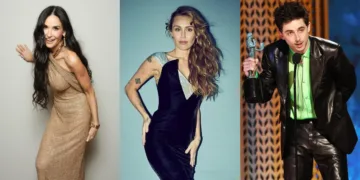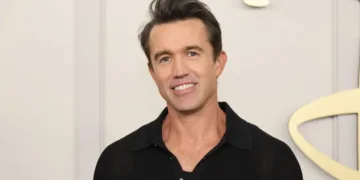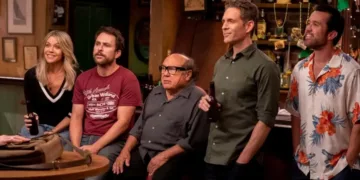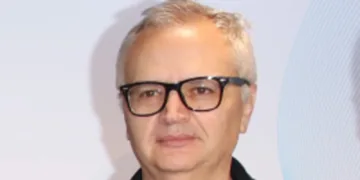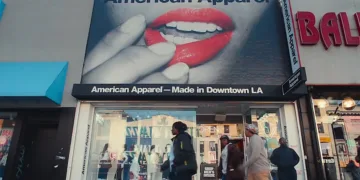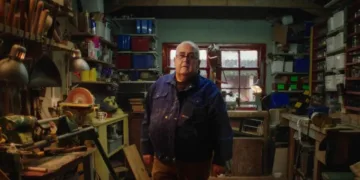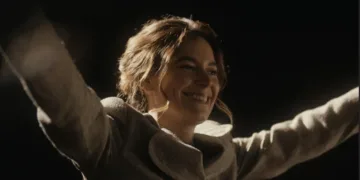Marlee Matlin appeared at the Academy of Motion Picture Arts and Sciences’ Scientific and Technical Awards to accept an Academy Award of Merit honoring captioning technology and the professionals who helped develop it. The award, represented by a full-size Oscar statuette, was presented in recognition of contributions to both open and closed captioning in film. The statuette will remain on permanent display at the Academy Museum of Motion Pictures.
In her remarks, Matlin expressed appreciation for the recognition but said the industry must do more to ensure consistent caption availability across screenings. She urged theaters, film festivals, studios, and producers to implement captioning across all venues and events.
“There is also an opportunity in the recognition to encourage and inspire the hearts and minds of film producers, studios, film festivals, exhibitors and theaters to actually step up to the plate to allow captions to be shown,” she said. “The technology is there. All that’s left to do is to reach those with the wherewithal to allow this dream to become a reality.”
Matlin outlined a goal of entering any theater at any time and seeing captions included by default, without requiring special screenings or added effort from viewers. She also emphasized the importance of captioning for archival screenings, where older films are often shown without accessible options.
“In the end, it would mean a world where people like me can sit side-by-side in theaters together with you without barriers,” she said. “I hope this award honoring captioning technology will also serve to look back and reach into our rich film libraries… Sadly, and oftentimes, they are exhibited without captions.”
Speaking with Variety prior to the ceremony, Matlin said the award signals a meaningful shift but described full accessibility as an ongoing pursuit. “The Academy recognizes that equality is very important, that all audiences are welcome in the filmgoing experience, and all audiences should be able to watch films together,” she said.
The ceremony was hosted by Andor star Diego Luna and held at the Academy Museum of Motion Pictures. It had been postponed from its original February date due to wildfires near Los Angeles. In his opening remarks, Luna acknowledged the recipients’ work as central to the advancement of filmmaking.
“You are the unsung heroes, but tonight we sing your praises,” he said. “What you create allows us to do our jobs. You make cinema the global force that it is today.”
This year’s Scientific and Technical Awards honored 14 achievements by 37 individuals across various areas, including image processing, motion control, fire stunt safety, and sound editing.
Denoising technologies were among the most recognized innovations. Javor Kalojanov and Kimball Thurston received Technical Achievement Awards for Wētā FX’s ML Denoiser. Attila T. Áfra was honored for Intel’s Open Image Denoise, and Timo Aila was recognized for his work at NVIDIA applying U-Net neural networks to image clean-up. A separate Scientific and Engineering Award went to Disney’s ML Denoiser team—Thijs Vogels, Fabrice Rousselle, David Adler, Gerhard Röthlin, and Mark Meyer.
In stunt safety, Jayson Dumenigo received a Scientific and Engineering Award for the Action Factory Hydrogels, which allow performers to withstand higher temperatures during fire scenes. Technical Achievement Awards went to Neeme Vaino for Fireskin360 Naked Burn Gel and to Dustin Brooks and Colin Decker for Fire for Hire’s gel-based system.
Several motion systems also received honors. Curt Schaller and Roman Foltyn were recognized for the ARRI Trinity 2, a stabilization platform combining body-worn mechanical systems with digital gimbals. The Tiffen Steadicam Volt team—Steve Wagner, Garrett Brown, Jerry Holway, and Robert Orf—earned a Scientific and Engineering Award for their two-axis inertial system. Dave Freeth was honored for the Stabileye system, a compact handheld stabilizer used for close-quarters filming.
Other recipients included Nir Averbuch, Yair Chuchem, and Dan Raviv for Sound Radix’s Auto Align Post 2, a tool that synchronizes multiple dialogue recordings during postproduction. Mark Noel received a Technical Achievement Award for his work on modular motion base platforms for simulated action sequences.
Additional honorees included Su Tie, Bei Shimen, and Zhao Yanchong for their work on the Ronin 2 camera gimbal. The team behind Freefly Systems’ Mōvi gimbals—Tabb Firchau, John Ellison, Steve Webb, David Bloomfield, and Shane Colton—also received recognition for enabling remote camera control with lightweight hardware.
A Technical Achievement Award was given to Essex Edwards, James Jacobs, Jernej Barbic, Crawford Doran, and Andrew van Straten for the Ziva VFX system, which allows for realistic soft tissue and muscle simulation in digital characters.













